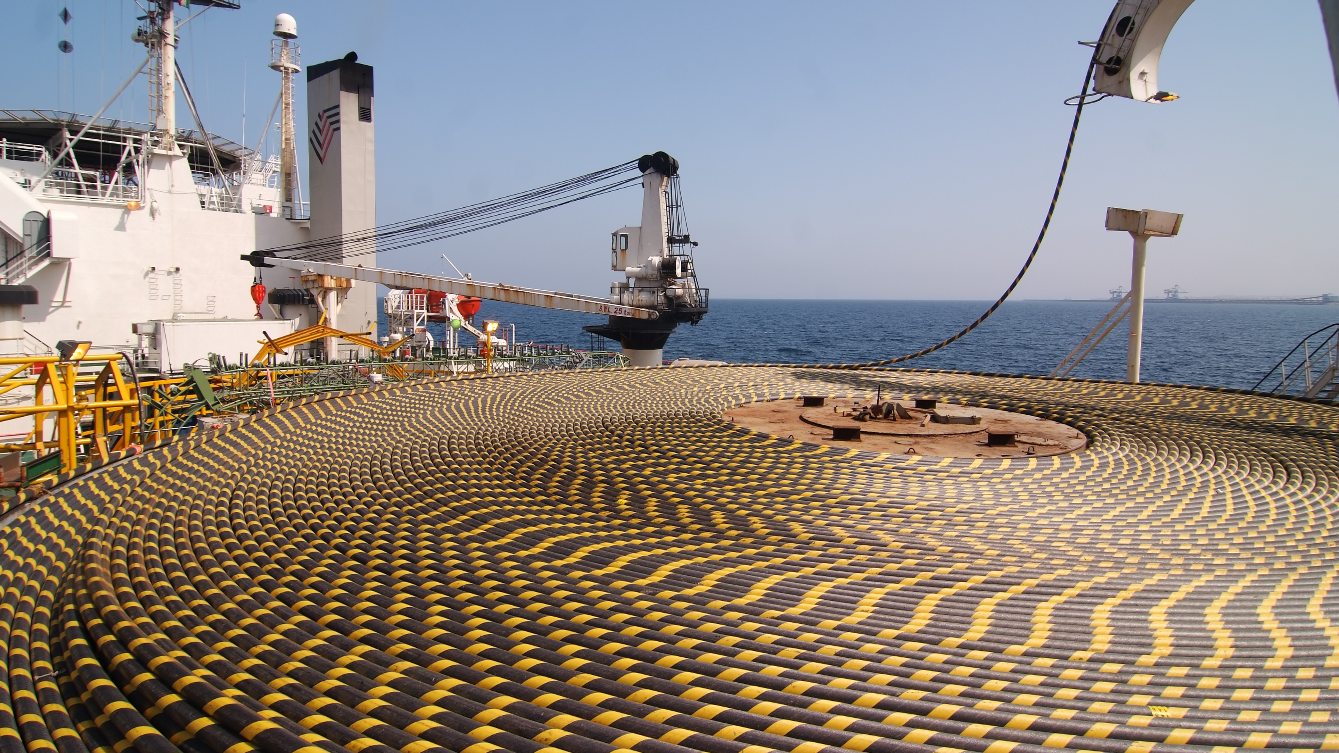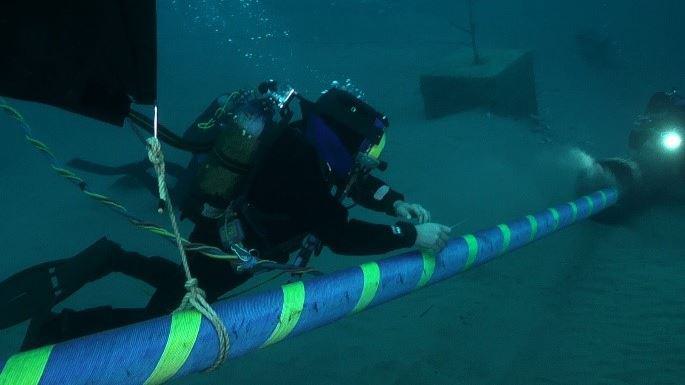In addition to overhead and underground power lines, electricity is also transported through undersea cables. Designed to transmit energy between two areas of land, undersea cables are laid on the bottom of the sea and, as the case may be, lakes or rivers and the high-voltage electricity they carry tends to be in DC. On the Mediterranean seabed, for example, two undersea connections have been laid which are essential for the energy exchange in the area: the longest 1,000 MW power line in the world lies between Sardinia and Lazio, (SA.PE.I.) and was inaugurated in 2011, while the longest AC connection in the world is between Sardinia and Lazio, (Sorgente-Rizziconi) and was inaugurated in 2016. The SA.PE.I. cable and the Sorgente-Rizziconi line represent Italian infrastructural excellence in terms of length, depth and technology employed, as well as the cable’s capacity for the transport of electricity.
In addition to overhead and underground power lines, electricity is also transported through undersea cables. Designed to transmit energy between two areas of land, undersea cables are laid on the bottom of the sea and, as the case may be, lakes or rivers and the high-voltage electricity they carry tends to be in DC.

The SA.PE.I. (Sardinia-Italian Peninsula) cable is the the world's deepest undersea cable, laid up to 1,640 metres below sea level. It is also the longest cable in the world, measuring 420 km between Sardinia and Lazio. The DC connection is composed of two undersea cables, able to support 500 kV voltage for 1,000 MW of power and the two largest electricity conversion stations in Italy, in Fiume Santo (Sassari) and Borgo Sabotino (Latina). The SA.PE.I. cable represents an authentic sustainability model in the field of large-scale infrastructure projects in Italy, thanks to the innovative no-impact cable laying methods implemented to protect the marine ecosystem it crosses. All the phases of the connection, from the identification of the undersea route to the installation, have been conceived, set up and completed with a view to sustainability, monitoring the sensitive marine areas, in particular that of the Cetacean Sanctuary and the prairies of aquatic plants such as the Posidonia oceanica and the Cymodocea nodosa.

A unique infrastructure, one of the most innovative infrastructures ever designed and built in the energy field, a world record for Italy and for Terna: the “Sorgente-Rizziconi” power line, which came into operation in 2016. A symbolic work that links Sicily and Calabria to the Italian Peninsula and the great European meshing grid. The infrastructure covers a total of 105 km and uses the longest 380 kV alternating current undersea power line in the world, with 38 km of cable laid on the sea floor at a maximum depth of 376 metres. A work that will increase the energy transfer capacity to up to 1,100 MW. In environmental terms, this infrastructure respects the environment and reduces atmospheric emissions by 700 thousand tons of CO2 every year. The cable in Calabria was installed using the deepest vertical well (descending for nearly 300 metres inside the mountain) and the longest horizontal tunnel (2.8 km) ever constructed for high-voltage cables. The corridor formed by the tunnel and the well enables the 6 undersea power cables to lead directly to the Scilla electrical substation at over 600 metres above sea level without ever breaking the surface, removing any visual or external impact to the beaches or the protected nature reserve.